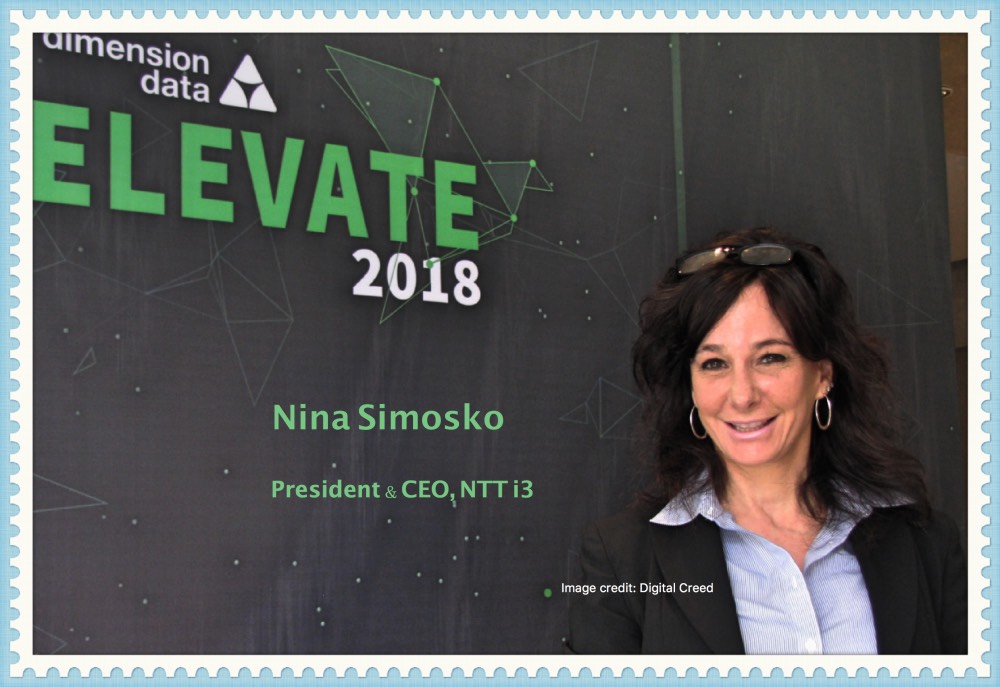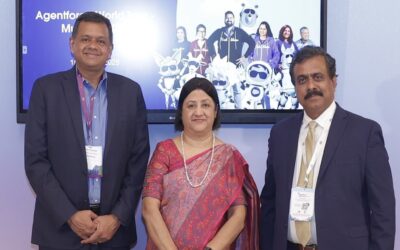Innovation at NTT i3. In a candid chat Nina Simosko, President & CEO, NTT i3 (Innovation Institute Inc) tells Brian Pereira about the charter of NTT’s Global Innovation Centre. Nina also told us how NTT i3 would like to work with Dimension Data to bring that innovation to Indian customers.
DC: What is the purpose of NTT i3 (Innovation Institute Inc)?
Nina: Our charter is three-fold. Number one, it’s to create net new revenue streams to the NTT Group and to disrupt ourselves. NTT is enormous, with over 900 companies and almost 300,000 employees. NTT Innovation Institute is the only one that goes horizontally across all the operating companies (DoCoMo, NTT Data, NTT Communications, Dimension Data etc).
We have three charters: One is to leverage the intellectual property that we have across the Group and commercialise it by putting our own intellectual property around it and to work with clients and the operating companies to add more value. The second is evangelising the NTT Group outside of Japan, which is why we’re based in the United States. And the third one is, of course, to host the clients through the Customer Experience Centre.

DC: There are so many companies in the NTT Group. How does NTT i3 fit in and complement?
Nina: We use the term ‘Connected Isolation’ because we’re connected to NTT and are part of NTT, and (we are) a separate company within the NTT Group. But we are a little bit sequestered. Being in Palo Alto (California) we’re there to evangelise the brands and leverage what’s happening within the Silicon Valley. Customers from all the operating companies come through the Palo Alto Customer Experience Centre and get the One NTT story. And a lot of times we’re educating both the sales representatives as well as the customer about the same.
We spend $2.3 billion a year on R&D in Tokyo. We have 2,500 people over there researching and developing amazing cutting-edge, forward thinking and creating interesting patents, technologies.
DC: So, this is the innovation arm of the NTT Group?
Nina: Yes. However, NTT Data and many of the operating companies have their own innovation and R&D centres. There are 2,500 people in Tokyo R&D (at NTT) who are part of a separate organisation, not NTT i3. However, NTT i3 is focused on applied R&D, our biggest differentiator. We take the best and brightest from there and bring them over to Palo Alto for two or three years in rotation. Those young engineers then get to speak directly to CIOs. They get to hear about real business problems; they get to interact with a bunch of different operating companies. These are experiences the engineers do not get when they are in Tokyo.
We have had a conversation (with the Indian government) on agri-tech. There’s things like that the Indian government has expressed an interest in. There have been some preliminary discussions. That agriculture tech is coming out of Japan.
DC: How do you innovate to solve customer problems?
Nina: We innovate in three ways. Anything could happen. One, it could fail. We might do a quick sprint on a certain technology. We might have a certain idea and failure is good. The second thing that can happen is, we have been working for five years so we have some platforms that are more robust and mature. Cloud WAN is one example. It’s a software-defined network solution that we are currently commercialising with Dimension Data in Africa, as well as NTT Communications in Japan. So, some of the things that we do on the early innovation stage might have value to those larger more mature platforms. They may move from my innovation area with NTT i3 to one of the more mature platforms that we’re working on.
The third thing that can happen is, it could itself become the next big platform. The Global Threat Intelligence Platform is another such example. Currently, NTT Security is licensing this intellectual property from NTT i3. And they’re taking it to market.
DC: What are the various areas NTT i3 has applied its innovative technologies?
Nina: Japan has a rice-growing culture. We’ve done some amazing things (there) with agriculture sensors to save water, which is a precious commodity. We now have technology that looks at the chlorophyll within plants and only waters the plants that actually need it.
We have had a conversation (with the Indian government) on agri-tech. There are things like that the Indian government has expressed an interest in. There have been some preliminary discussions. That agriculture tech is coming out of Japan.
There is so much talent in India and we would love to do something like agri-tech. We are also looking forward to working with Dimension Data India. We believe there is great potential in our collaboration together and that we can offer cutting-edge innovative solutions for the clients here.
DC: There’s a lot of innovation happening in India. Are you considering some local partnerships for innovation?
Nina: We actually leverage NTT Data resources (in India) and Netmagic Solutions, which is the support structure for Cloud WAN. So, we operate in India through Netmagic and NTT Data.
There is so much talent in India and we would love to do something like agri-tech. We are also looking forward to working with Dimension Data India. We believe there is great potential in our collaboration together and that we can offer cutting-edge innovative solutions for the clients here.
DC: What’s your vision for NTT i3? What would you like to achieve in 2 – 3 years?
Nina: Not everyone within the NTT Group even knows who we are. We must do a lot of internal marketing for awareness. It is an interesting model and bridge between the R&D happening in Japan and the client who wants to innovate.
In the next 2 – 3 years I see some interesting innovations coming from NTT i3
We will continue to innovate. We are working hard in areas like edge computing, IoT; we can Dockerise apps. We like to build with the client and the operating companies. We exist for the operating companies.
You might also want to see: Innovation at CA Technologies, India









